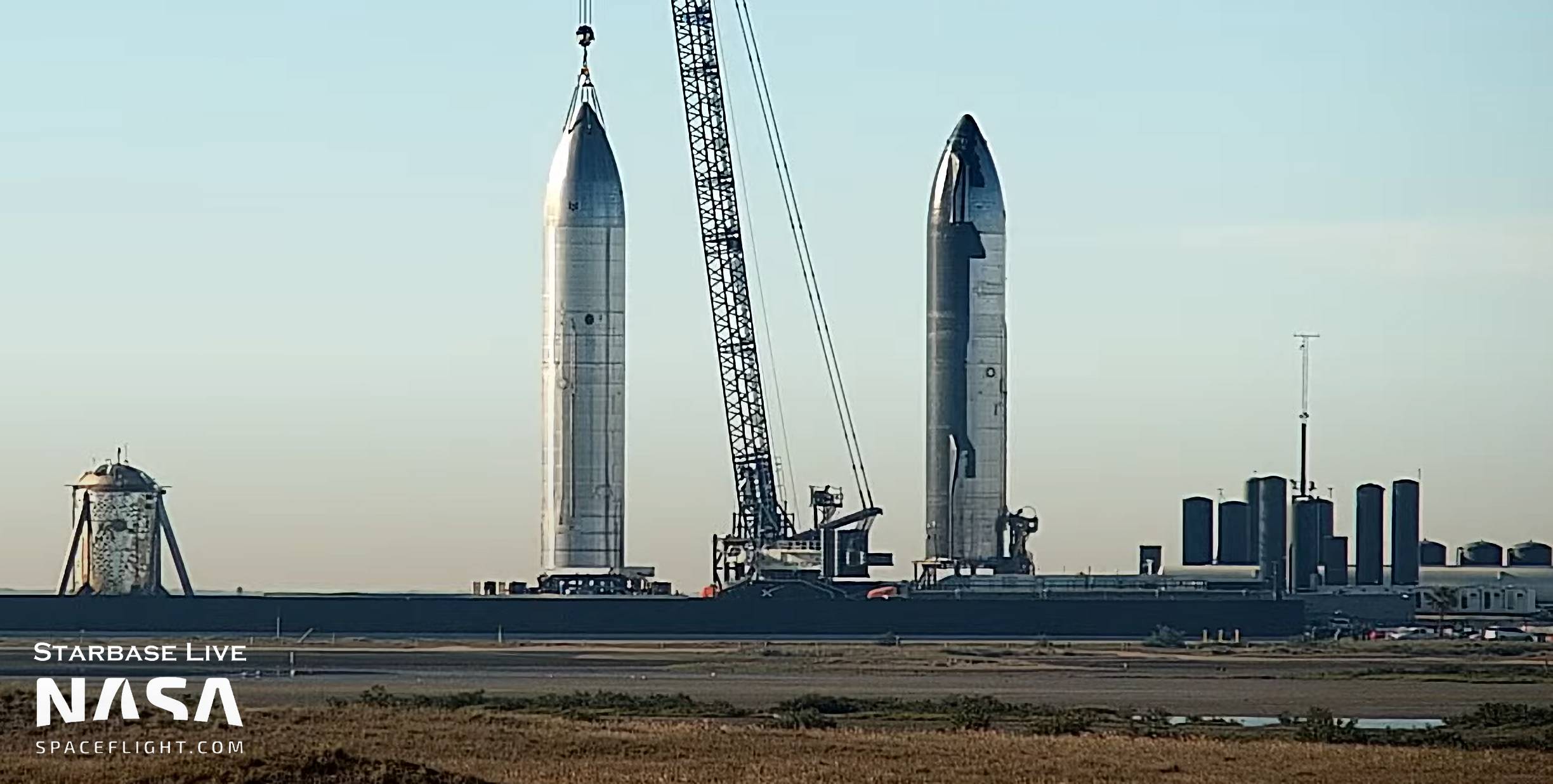
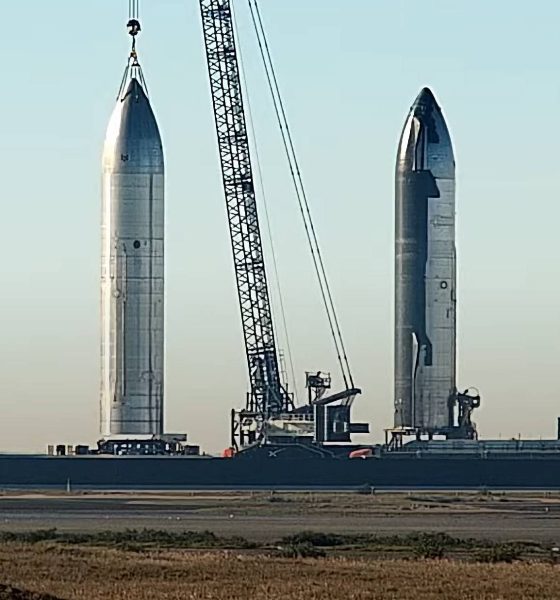
News
SpaceX rolls naked Starship prototype to test site
SpaceX has rolled a strange, naked Starship prototype from its Starbase, Texas factory to a nearby test site.
Beginning with its cone-tipped nose section, SpaceX started stacking Starship S26 in October 2022. By early January 2023, the prototype had been stacked to its full 50-meter (~165 ft) height and welded together. After about six more weeks of outfitting, Ship 26 left Starbase’s High Bay assembly facility and was transported to one of two stands formerly used for suborbital Starship test flights.
SpaceX lifted Ship 26 onto Suborbital Pad A on the morning of February 12th. Just a few hundred feet to the left, Starship prototype S25 watched from Suborbital Pad B while waiting for the start of its Raptor engine test campaign. Ship 26 is four months younger than Ship 25 and rolled out without Raptors installed, as it still needs to pass several simpler tests. That’s far from the only difference between the Starships.
The update that's rolling out to the fleet makes full use of the front and rear steering travel to minimize turning circle. In this case a reduction of 1.6 feet just over the air— Wes (@wmorrill3) April 16, 2024
Starbullet
Aside from a range of smaller design changes, Ship 26 has three main differences relative to most prior Starships. First, it has zero heat shield tiles. Since the 2020-2021 period of suborbital Starship flight testing, all finished ships (S20, S21, S22, S24, S25) have been fitted with ~10,000 black, ceramic heat shield tiles. Eventually, those tiles will (theoretically) protect Starships from the intense heat created by reentering Earth’s atmosphere at orbital velocity.
Ship 26 also has no flaps. Since SpaceX first fully assembled a Starship in October 2020, every ship the company has completed (SN8, SN9, SN10, SN11, SN15, SN16, S20, S21, S22, S24, S25) has had four large flaps and form-fitting ‘aerocovers’ installed. Starships need flaps to steer and orient themselves during orbital reentries. They also need flaps to control themselves during exotic landing maneuvers, which require ships to free-fall belly-down (like a human skydiver) and aggressively flip into a vertical orientation for propulsive landings.
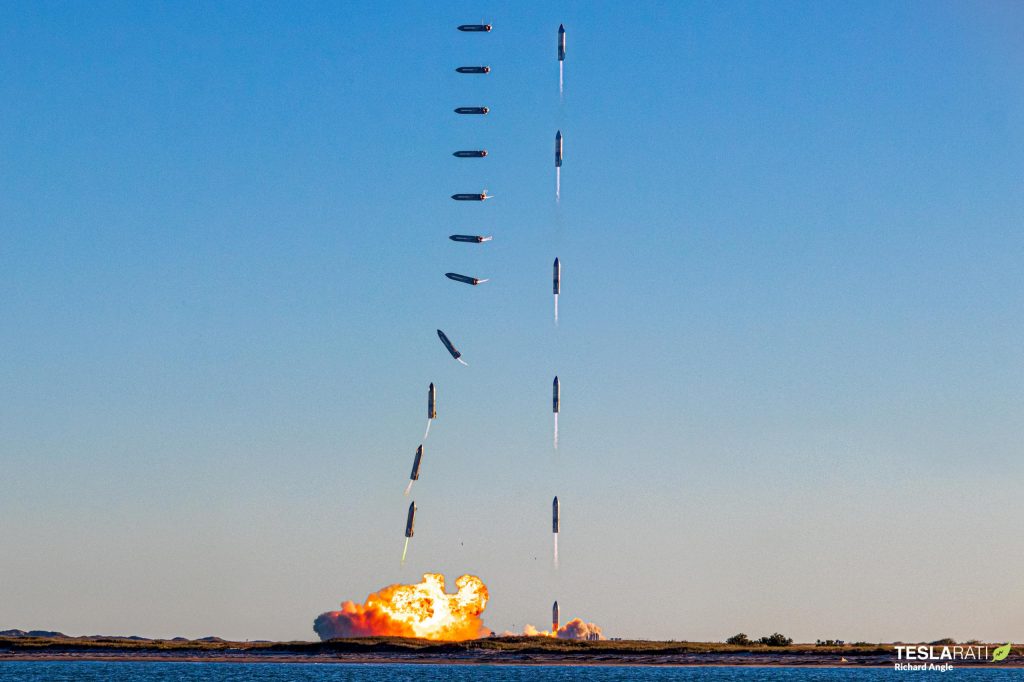
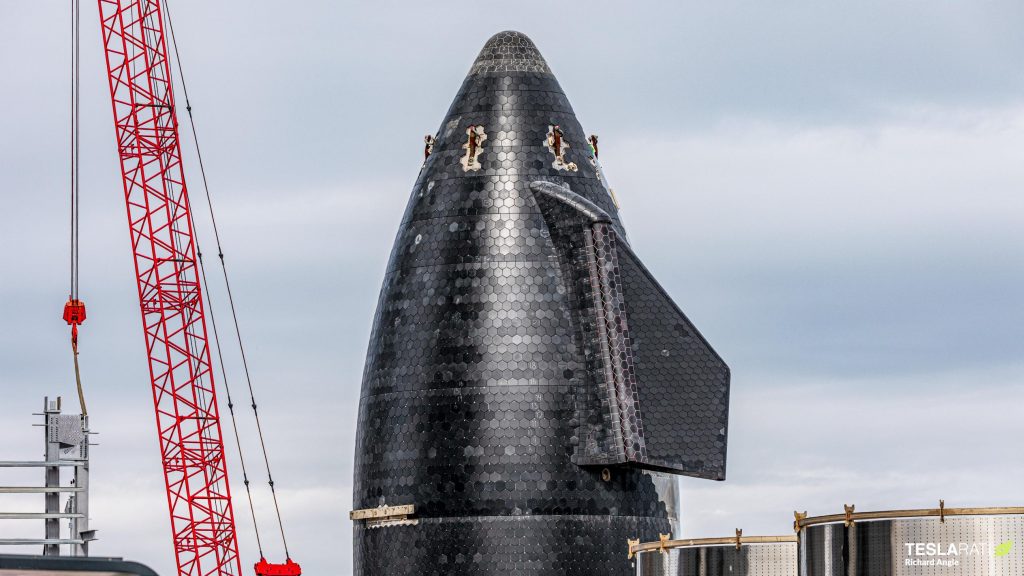
Finally, and most confusingly, Ship 26 has no payload bay of any kind. The end result is a smooth, featureless Starship that looks like a steel bullet, can’t return to Earth, and can’t deploy satellites. Combined, the fact it exists at all almost seems like an elaborate, multi-month mistake. But SpaceX clearly intended to build Ship 26 and is now preparing to qualify it for flight.
Depot, Moon lander, or something else?
In simpler terms, Ship 26 is an intentionally expendable Starship with no way to launch satellites. That raises the obvious question: why does it exist? There are a few obvious possibilities. SpaceX is developing at least four types of Starships. The Crew and Tanker Ships will have heat shields and flaps. The Starship Moon lander will have no flaps or heat shield and will be painted white and insulated. A Depot Ship with stretched tanks will stay in orbit permanently and store propellant for in-space refilling.
Based on low-resolution renders, the bullet-like Depot Ship is the most reminiscent of Ship 26. However, there’s no evidence that Ship 26 has “exterior optical properties [optimized] for long duration [propellant storage].” The prototype also lacks any of the hardware likely needed for docking or propellant transfer and has propellant tanks that are the same size as past ships. To survive in orbit for days or weeks, it would need some kind of power source – typically solar arrays – that isn’t present. And even if an expendable Starship like S26 can already achieve SpaceX’s reported target of 250 tons (~550,000 lb) to low Earth orbit, 250 tons is only a fifth of a full propellant load.
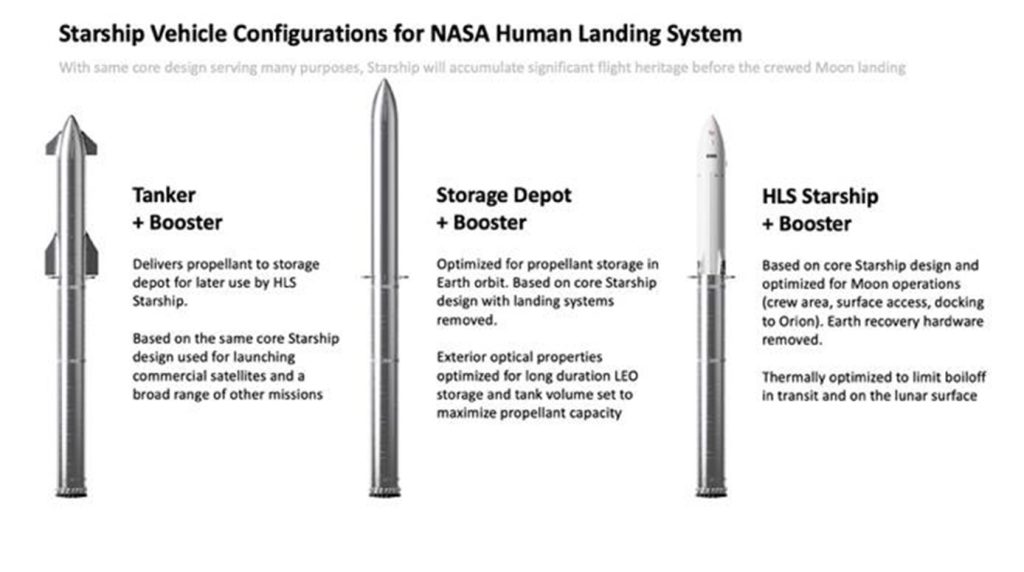
Ship 26 could also be used for miscellaneous systems testing or a longevity demonstration in orbit. However, it’s unclear why SpaceX couldn’t simply do that with Ship 24 and Ship 25. Both have had their payload bays permanently sealed, meaning that they are only useful as test articles. The same is true for a tank-to-tank propellant transfer test SpaceX received a NASA contract to conduct in 2020. During that test, Starship will transfer “10 metric tons” of cryogenic liquid oxygen (LOx) between its main LOx tank and a smaller header LOx tank used to store landing propellant. But all Starships built to date have header tanks and could be used for the same test.
Ship 26 could exist primarily to demonstrate that a Starship with no flaps or heat shield tiles is aerodynamically stable during launch. However, expending an entire Starship for what amounts to wind tunnel testing would be extravagant.
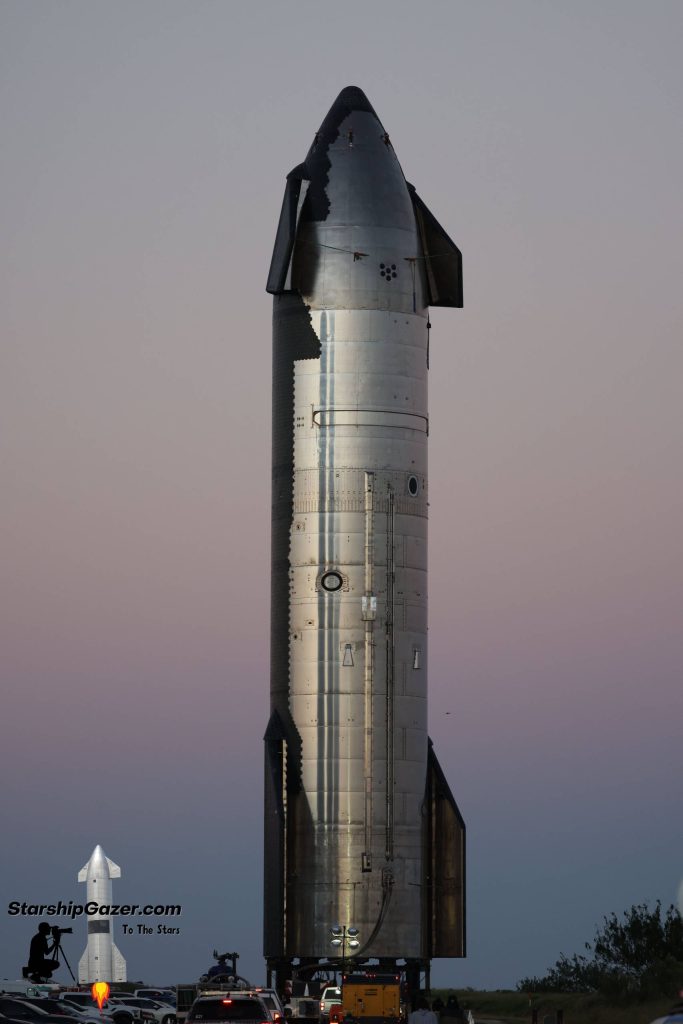
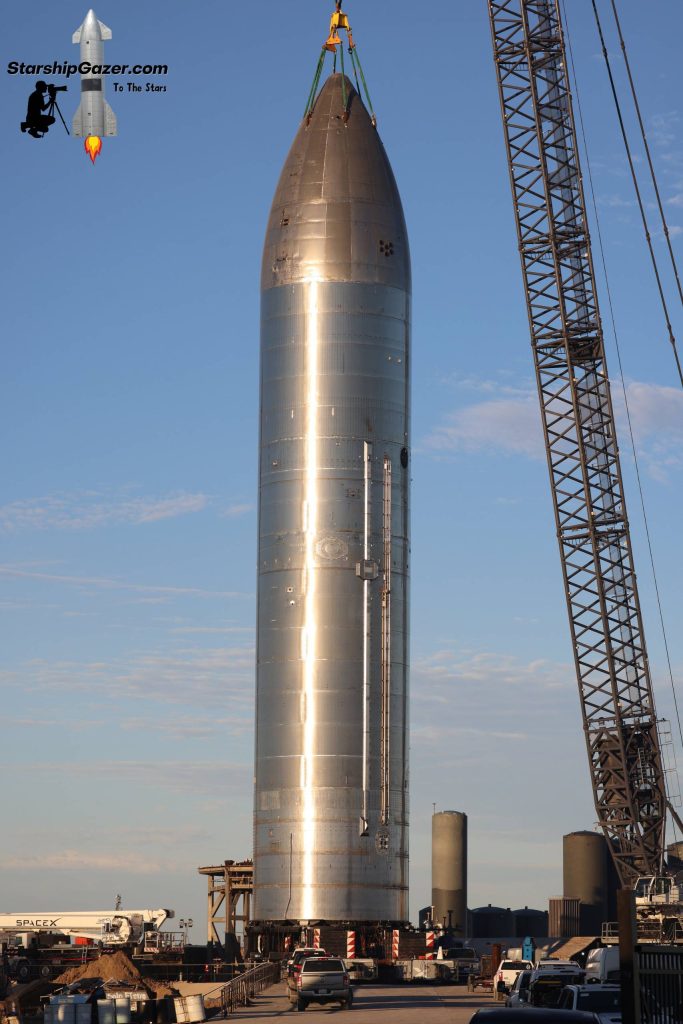
Preparing for flight
Regardless, Ship 26 is clearly destined for more than the scrapyard. The bullet-like prototype was installed on Suborbital Pad A, which SpaceX has modified for cryogenic proofing and structural testing. While coordinating with Ship 25, which needs to conduct static fire tests, Ship 26 will be pressurized and loaded with liquid nitrogen, liquid oxygen, or both to safely simulate the thermal and mechanical loads it will experience when filled with propellant. The stand is fitted with hydraulic rams that can simultaneously simulate the thrust of six Raptor engines (1380 tons / 3M lbf).
If it passes those tests, SpaceX will presumably return Ship 26 to the Starbase factory for Raptor installation. Strangely, the smooth Starship isn’t alone. It appears that Ship 27 will be more or less identical, with no heat shield or flaps. However, there’s evidence that Ship 27 will have the first working payload bay on a Starship and could be used to deploy full-size Starlink V2 satellites in addition to any other testing SpaceX wants to use it for.
The most exotic (and unlikeliest) explanation for Ship 26 and Ship 27 is that the pair is meant to support SpaceX’s first Starship docking and propellant transfer test. In October 2022, a NASA official indicated that SpaceX’s second Starship test flight would be a “Starship-to-Starship propellant transfer.”
For now, SpaceX’s priority is preparing Ship 24 and Super Heavy Booster 7 for Starship’s first orbital launch attempt, followed by preparing Ship 25 and Booster 9 for the second orbital test flight. Until then, Ship 26 and Ship 27 will likely remain a bit of a mystery.

Elon Musk
SpaceX issues statement on Starship V3 Booster 18 anomaly
The incident unfolded during gas-system pressure testing at the company’s Massey facility in Starbase, Texas.

SpaceX has issued an initial statement about Starship Booster 18’s anomaly early Friday. The incident unfolded during gas-system pressure testing at the company’s Massey facility in Starbase, Texas.
SpaceX’s initial comment
As per SpaceX in a post on its official account on social media platform X, Booster 18 was undergoing gas system pressure tests when the anomaly happened. Despite the nature of the incident, the company emphasized that no propellant was loaded, no engines were installed, and personnel were kept at a safe distance from the booster, resulting in zero injuries.
“Booster 18 suffered an anomaly during gas system pressure testing that we were conducting in advance of structural proof testing. No propellant was on the vehicle, and engines were not yet installed. The teams need time to investigate before we are confident of the cause. No one was injured as we maintain a safe distance for personnel during this type of testing. The site remains clear and we are working plans to safely reenter the site,” SpaceX wrote in its post on X.
Incident and aftermath
Livestream footage from LabPadre showed Booster 18’s lower half crumpling around the liquid oxygen tank area at approximately 4:04 a.m. CT. Subsequent images posted by on-site observers revealed extensive deformation across the booster’s lower structure. Needless to say, spaceflight observers have noted that Booster 18 would likely be a complete loss due to its anomaly.
Booster 18 had rolled out only a day earlier and was one of the first vehicles in the Starship V3 program. The V3 series incorporates structural reinforcements and reliability upgrades intended to prepare Starship for rapid-reuse testing and eventual tower-catch operations. Elon Musk has been optimistic about Starship V3, previously noting on X that the spacecraft might be able to complete initial missions to Mars.
Investor's Corner
Tesla analyst maintains $500 PT, says FSD drives better than humans now
The team also met with Tesla leaders for more than an hour to discuss autonomy, chip development, and upcoming deployment plans.

Tesla (NASDAQ:TSLA) received fresh support from Piper Sandler this week after analysts toured the Fremont Factory and tested the company’s latest Full Self-Driving software. The firm reaffirmed its $500 price target, stating that FSD V14 delivered a notably smooth robotaxi demonstration and may already perform at levels comparable to, if not better than, average human drivers.
The team also met with Tesla leaders for more than an hour to discuss autonomy, chip development, and upcoming deployment plans.
Analysts highlight autonomy progress
During more than 75 minutes of focused discussions, analysts reportedly focused on FSD v14’s updates. Piper Sandler’s team pointed to meaningful strides in perception, object handling, and overall ride smoothness during the robotaxi demo.
The visit also included discussions on updates to Tesla’s in-house chip initiatives, its Optimus program, and the growth of the company’s battery storage business. Analysts noted that Tesla continues refining cost structures and capital expenditure expectations, which are key elements in future margin recovery, as noted in a Yahoo Finance report.
Analyst Alexander Potter noted that “we think FSD is a truly impressive product that is (probably) already better at driving than the average American.” This conclusion was strengthened by what he described as a “flawless robotaxi ride to the hotel.”
Street targets diverge on TSLA
While Piper Sandler stands by its $500 target, it is not the highest estimate on the Street. Wedbush, for one, has a $600 per share price target for TSLA stock.
Other institutions have also weighed in on TSLA stock as of late. HSBC reiterated a Reduce rating with a $131 target, citing a gap between earnings fundamentals and the company’s market value. By contrast, TD Cowen maintained a Buy rating and a $509 target, pointing to strong autonomous driving demonstrations in Austin and the pace of software-driven improvements.
Stifel analysts also lifted their price target for Tesla to $508 per share over the company’s ongoing robotaxi and FSD programs.
Elon Musk
SpaceX Starship Version 3 booster crumples in early testing
Photos of the incident’s aftermath suggest that Booster 18 will likely be retired.
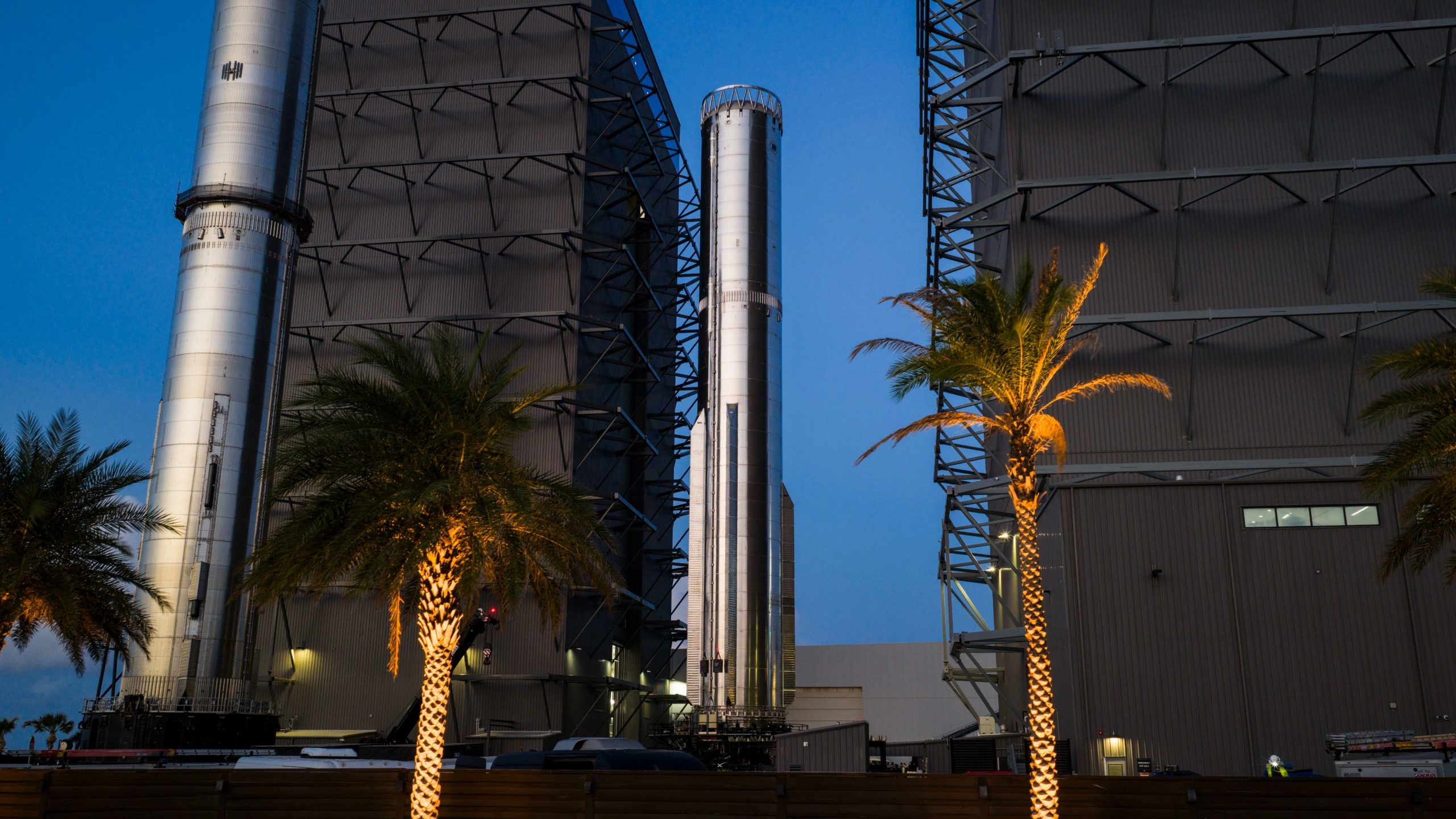
SpaceX’s new Starship first-stage booster, Booster 18, suffered major damage early Friday during its first round of testing in Starbase, Texas, just one day after rolling out of the factory.
Based on videos of the incident, the lower section of the rocket booster appeared to crumple during a pressurization test. Photos of the incident’s aftermath suggest that Booster 18 will likely be retired.
Booster test failure
SpaceX began structural and propellant-system verification tests on Booster 18 Thursday night at the Massey’s Test Site, only a few miles from Starbase’s production facilities, as noted in an Ars Technica report. At 4:04 a.m. CT on Friday, a livestream from LabPadre Space captured the booster’s lower half experiencing a sudden destructive event around its liquid oxygen tank section. Post-incident images, shared on X by @StarshipGazer, showed notable deformation in the booster’s lower structure.
Neither SpaceX nor Elon Musk had commented as of Friday morning, but the vehicle’s condition suggests it is likely a complete loss. This is quite unfortunate, as Booster 18 is already part of the Starship V3 program, which includes design fixes and upgrades intended to improve reliability. While SpaceX maintains a rather rapid Starship production line in Starbase, Booster 18 was generally expected to validate the improvements implemented in the V3 program.
Tight deadlines
SpaceX needs Starship boosters and upper stages to begin demonstrating rapid reuse, tower catches, and early operational Starlink missions over the next two years. More critically, NASA’s Artemis program depends on an on-orbit refueling test in the second half of 2026, a requirement for the vehicle’s expected crewed lunar landing around 2028.
While SpaceX is known for diagnosing failures quickly and returning to testing at unmatched speed, losing the newest-generation booster at the very start of its campaign highlights the immense challenge involved in scaling Starship into a reliable, high-cadence launch system. SpaceX, however, is known for getting things done quickly, so it would not be a surprise if the company manages to figure out what happened to Booster 18 in the near future.








